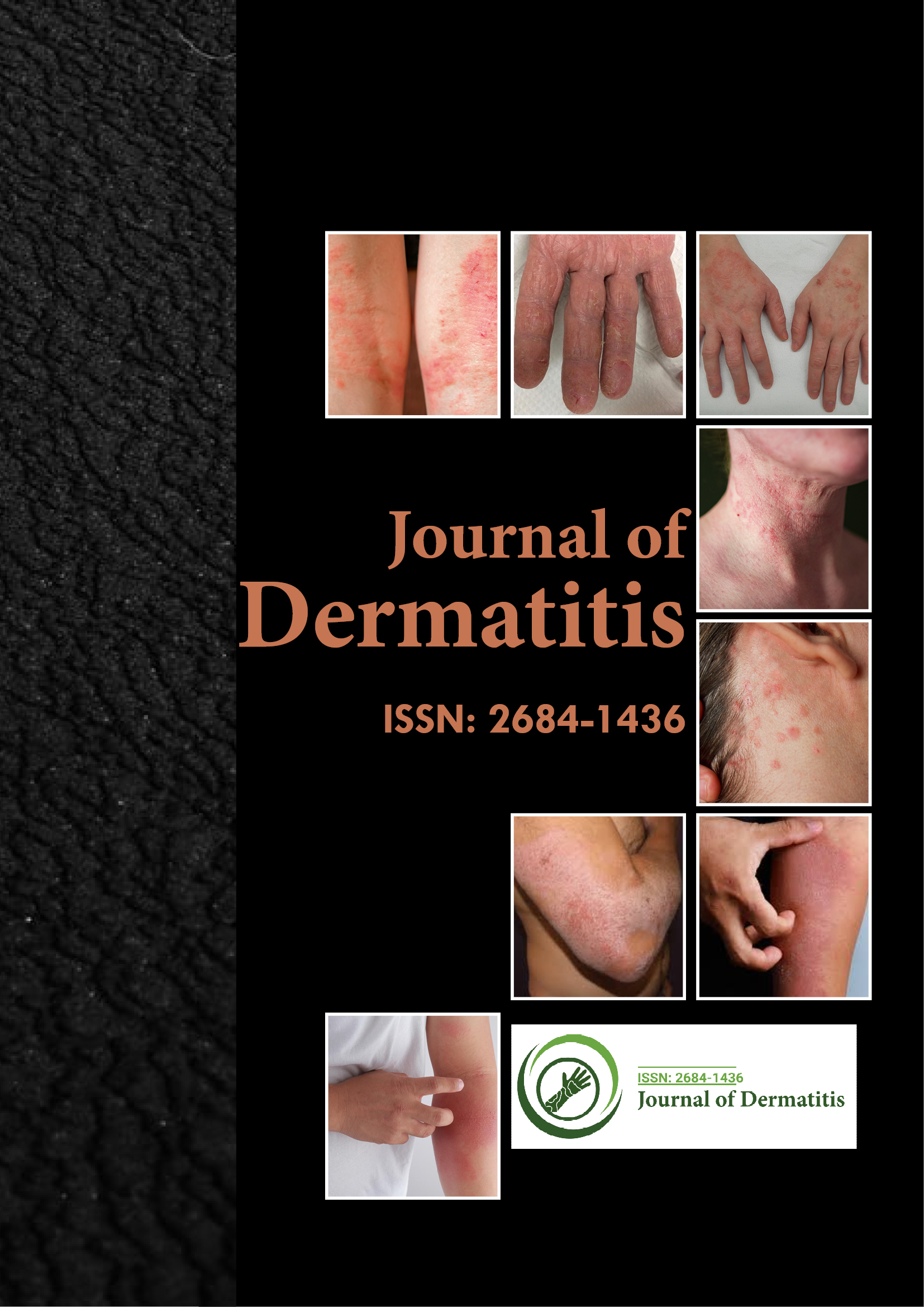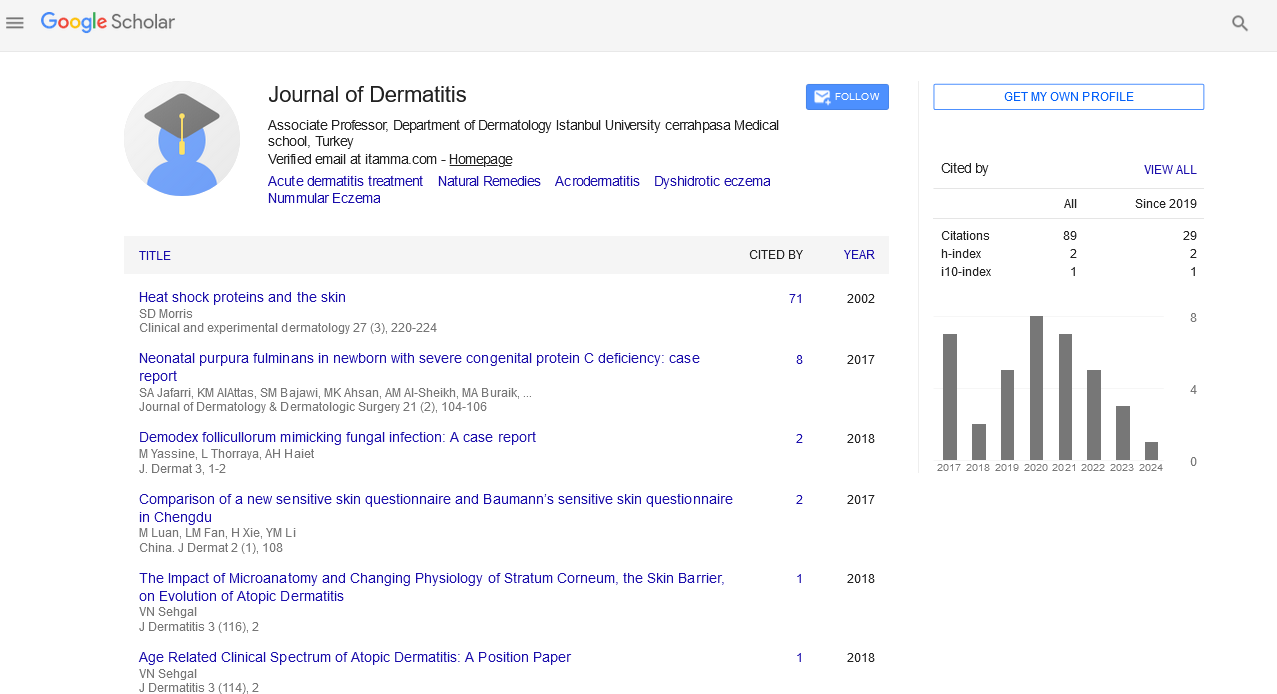Indexed In
- RefSeek
- Hamdard University
- EBSCO A-Z
- Euro Pub
- Google Scholar
Useful Links
Share This Page
Journal Flyer

Open Access Journals
- Agri and Aquaculture
- Biochemistry
- Bioinformatics & Systems Biology
- Business & Management
- Chemistry
- Clinical Sciences
- Engineering
- Food & Nutrition
- General Science
- Genetics & Molecular Biology
- Immunology & Microbiology
- Medical Sciences
- Neuroscience & Psychology
- Nursing & Health Care
- Pharmaceutical Sciences
Opinion - (2024) Volume 9, Issue 1
Erythrodermic Psoriasis: Clinical Features and Epidemiology
Sayed Alam*Received: 02-Mar-2024, Manuscript No. JOD-24-26059; Editor assigned: 05-Mar-2024, Pre QC No. JOD-24-26059 (PQ); Reviewed: 21-Mar-2024, QC No. JOD-24-26059; Revised: 27-Mar-2024, Manuscript No. JOD-24-26059 (R); Published: 05-Apr-2024, DOI: 10.35248/2684-1436.24.9.236
Description
Erythrodermic psoriasis is an extreme and uncommon type of psoriasis that affects almost the whole body surface area. It is typified by extensive skin redness and scaling. Because it affects the body's capacity to control fluid and temperature, it can be fatal. It is frequently accompanied by excruciating pain, swelling, and itching. When erythrodermic psoriasis manifests clinically, the skin appears red and flaming, and it may shed scales in sheets, exposing raw, sensitive skin underneath. A harsh sunburn, some drugs, infections, or a sudden stop to systemic psoriasis treatment can all cause the condition. According to epidemiology, erythrodermic psoriasis is uncommon and only affects a tiny portion of psoriasis sufferers. It usually affects those who are older and have a history of plaque psoriasis more frequently.
In order to control symptoms and avoid consequences, prompt medical intervention is essential. Treatment usually entails hospitalization, topical therapies, systemic drugs, and supportive care. A rare skin disorder called erythrodermic psoriasis results in a crimson rash that covers much of the body. Similar to a burn, the rash can be just as fatal because it can produce chills, fever, and dehydration. Erythrodermic psoriasis requires immediate medical attention. Psoriasis is a persistent skin illness that arises when the body creates new skin cells faster than they shed or die. As a result, cells build up on the skin's surface. Patches of thick, itchy skin covered in scales that are pink, red, or white might occur. This condition, also called plaque psoriasis, is not harmful to our health, despite the fact that it may be unsightly.
Despite being a rare form of the illness, erythrodermic psoriasis is significantly more severe than the majority of other subtypes. Plaques have the potential to almost entirely cover the body, with potentially fatal implications. Psoriasis affects an estimated 3% of Americans, most of whom are adults. As many as nine out of ten psoriasis sufferers have plaque psoriasis. Only about 3% of those with psoriasis have the erythrodermic form of the disease. Approximately one in three people who develop erythrodermic psoriasis also have plaque psoriasis. It happens when our immune system mistakenly overreacts, causing harm to our own body. Inflammation caused by this response hastens the production of new skin cells.
People with poorly controlled plaque psoriasis are most at risk of developing erythrodermic psoriasis. If psoriasis treatments, such as immunosuppressants or corticosteroids, are stopped suddenly, erythrodermic psoriasis may result. Excessive use of medications such as topical steroids and retinoids, which are related to vitamin A, can also cause symptoms. Erythrodermic psoriasis can occur in certain individuals as a result of drug allergies, infections, severe sunburns, stress, or substance abuse disorders. Erythrodermic psoriasis can appear rapidly in a few days (as an acute rash). The usual scenario for plaque development is an extant psoriasis rash. It could take many months for erythrodermic psoriasis to fully manifest. We have redness and inflammation on over 90% of our body, which mimics a serious burn or sunburn. The skin rash may feel burning and is quite irritating. In addition, skin in large sheets may begin to flake off. For some people, losing their nails and toenails might be problematic.
Erythrodermic psoriasis symptoms might appear and disappear. The rash and other symptoms may be minor or nonexistent as a result of treatments that control the illness and even put it into remission. Still, flare-ups may occur, reviving the broad rash and associated symptoms. The symptoms of erythrodermic psoriasis may come and go. Treatments that manage the condition and even put it into remission may result in a mild or nonexistent rash along with other symptoms. However, flare-ups could still happen, bringing back the widespread rash and related symptoms. Even though erythrodermic psoriasis can be very effectively controlled with the correct treatment, it is a chronic illness that is now incurable. We have to follow our doctor's skincare and treatment recommendations to prevent flare-ups. Good disease management lowers our chance of serious consequences and even death.
Citation: Alam S (2024) Erythrodermic Psoriasis: Clinical Features and Epidemiology. J Dermatitis. 9:236.
Copyright: © 2024 Alam S. This is an open-access article distributed under the terms of the Creative Commons Attribution License, which permits unrestricted use, distribution, and reproduction in any medium, provided the original author and source are credited.

